Mannert L. Abele (DD-733)
1944–1945
Mannert Lincoln Abele -- born in Quincy, Mass., on 11 July 1903, the son of Francis I. Abele, Jr., and Addie L. (Tupper) Abele -- attended Cranch Grammar School and three years at Quincy High School before enlisting in the U.S. Navy at the age of seventeen on 12 August 1920. Assigned to battleship Utah (BB-31) just before she departed for European duty, Abele attained the rank of apprentice seaman while training at Newport, R.I.
Detached from Utah in December 1921, Abele received orders back to take entrance examinations to the U.S. Naval Academy. Upon his appointment-at-large, he became a midshipman in June 1922. Nicknamed “Jim” (a name even his sons affectionately called him), Abele was a member of the Naval Academy’s soccer squad before graduating and being commissioned ensign on 3 June 1926. Two years later, he received promotion to lieutenant (junior grade); promoted to lieutenant on 30 June 1936; and to lieutenant commander on 1 December 1940.
Ens. Abele’s first assignment upon graduation was on board battleship Colorado (BB-45), serving until 7 January 1929. Applying for submarine school, he was accepted and reported to the Submarine Base, New London, Connecticut, for instruction. Completing the course several months later, he received assignment to S-23 (SS-138), a unit of Submarine Division 4, serving on board as engineering officer until April 1933.
Receiving orders for shore duty to the Bureau of Navigation, Navy Department, until 30 May 1936, Lt. (j.g.) Abele served first on board R-11 (SS-88) before accepting command of R-13 (SS-90). While commanding R-13, his commanding officer described him as “the ablest commanding officer in the division,” leading R-13 to receive the Navy’s coveted “E” for excellence award. From June 1939 – August 1940, the scholarly submariner served as Assistant Professor of Naval Science, in connection with the Naval Reserve Officers Training Command (NROTC) unit at Harvard University. One of Lt. Cmdr. Abele’s students, Endicott Peabody, an all-American football star, later served as Governor of Massachusetts.
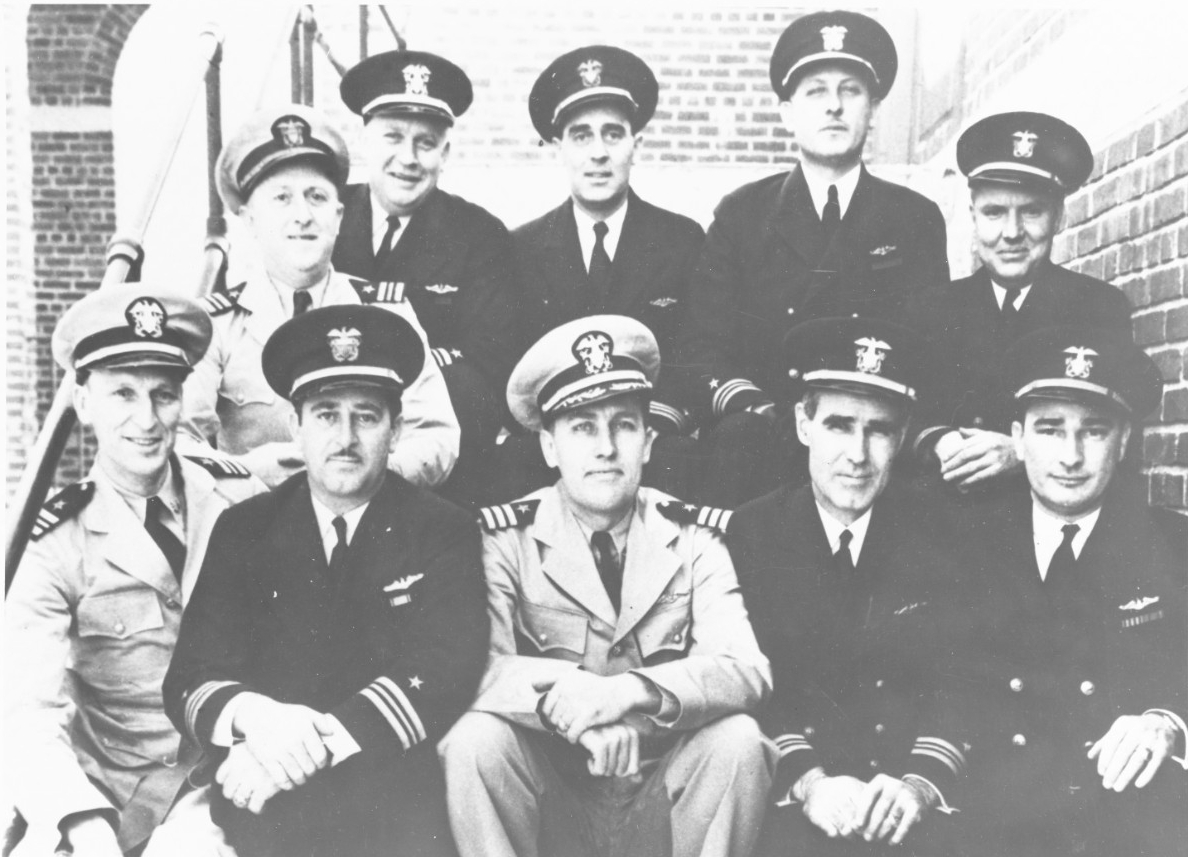
Receiving orders to S-31 (SS-136), Lt. Cmdr. Abele commanded that boat (August 1940 – November 1941), before fitting out Grunion (SS-216), built at the Electric Boat Company, Groton, Ct., and assuming command of her upon her commissioning on 11 April 1942.
After her shakedown cruise out of New London, Grunion sailed for Pearl Harbor on 24 May 1942. A week later, on 3 June, Grunion arrived at Coco Solo, Panama, having transported 16 survivors of USAT Jack, victims of a torpedoing by German submarine U-558. Grunion resumed transiting the Panama Canal in early June, continuing to make way for Hawaii. Arriving in Oahu on 20 June, Cmdr. Abele soon received orders to the Aleutian Islands, and Grunion steamed out of Pearl Harbor on 30 June, for the western Aleutians.
On 10 July 1942, Grunion, reassigned to the waters north of Kiska, hunted enemy ships. (15 – 30 July), came under attack on 15 July from three unidentified Japanese vessels. Firing a spread of torpedoes at her tormentors, Grunion allegedly sank all three. Postwar records determined the “destroyers” to be enemy Submarine Chasers No, 25 and Submarine Chaser No, 27. Commander Abele received credit (and later a Navy Cross) for sending both to the bottom, as well as damaging the third, Submarine Chaser No, 26. In addition, Grunion (by some accounts) torpedoed and damaged the 8,572-ton freighter Kano Maru.
Receiving orders on 19 July 1942 to proceed with S-32 (SS-137), Triton (SS-201) and Tuna (SS-203), to patrol an area approaching Kiska’s harbor, Grunion and the three boats were to make way to Kiska by 22 July. Grunion reported an attack on unidentified “enemy ships” six miles south off Sirius Point, Kiska, on 28 July. Firing two torpedoes, Cmdr. Abele observed no explosions. Resuming duties in her patrol area, [the official Navy account] states an intensive increase in anti-submarine activity off Kiska caused Grunion’s recall to Dutch Harbor, Alaska, on 30 July 1942.
Grunion never arrived to Dutch Harbor and all communications to her went unanswered. Reported missing on 16 August 1942, the U.S. Navy presumed her lost on 5 October. Stricken from the Navy Register on 2 November, Grunion would remain missing for the next 65 years.
The Navy Cross citation for Cmdr. Abele, presented to his wife Catharine and sons, Bruce, Brad, and John, stated Abele availed himself “of every attack opportunity with alert skill and efficiency, (and) succeeded in sinking, in one day, three Japanese destroyers. Mrs. Abele was magnanimous in sharing news of the award with the families of Grunion’s lost crew. She wrote the next-of-kin of the men, declaring that the award belonged as much to their loved ones’ as to her husband.
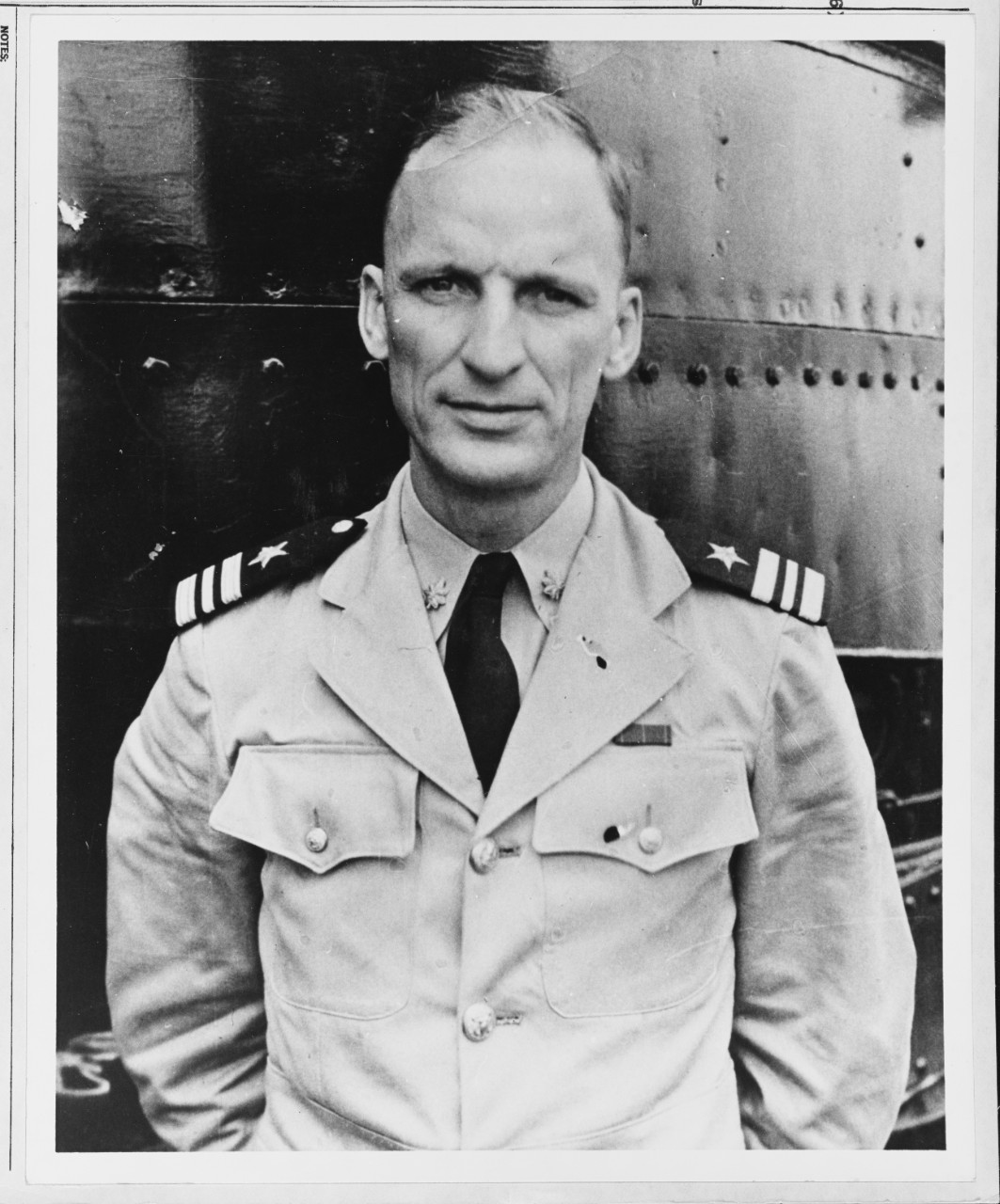
(DD‑733; displacement 2,200; length 376'6"; beam 41'1"; draft 15'8"; speed 34 knots; complement 336; armament 6 5-inch, 12 40-millimeter, 11 20-millimeter, 10 21-inch torpedo tubes; 6 depth charge projectors; 2 depth charge tracks; class Allen M. Sumner)
Mannert L. Abele (DD‑733) was laid down on 9 December 1943, at Bath, Maine, by Bath Iron Works Corp.; launched on 23 April 1944; sponsored by Mrs. Catharine L. Abele, wife of Cmdr. Mannert L. Abele; and commissioned at Boston Navy Yard, on 4 July 1944, Cmdr. Alton E. Parker in command.
After completing her shakedown off Bermuda on 6 September 1944, Mannert L. Abele got underway for Boston, Mass., for a post-shakedown availability that lasted until 19 September. Soon after, she acted as a training ship for officers, nucleus and balance crews of the training command through 12 October.
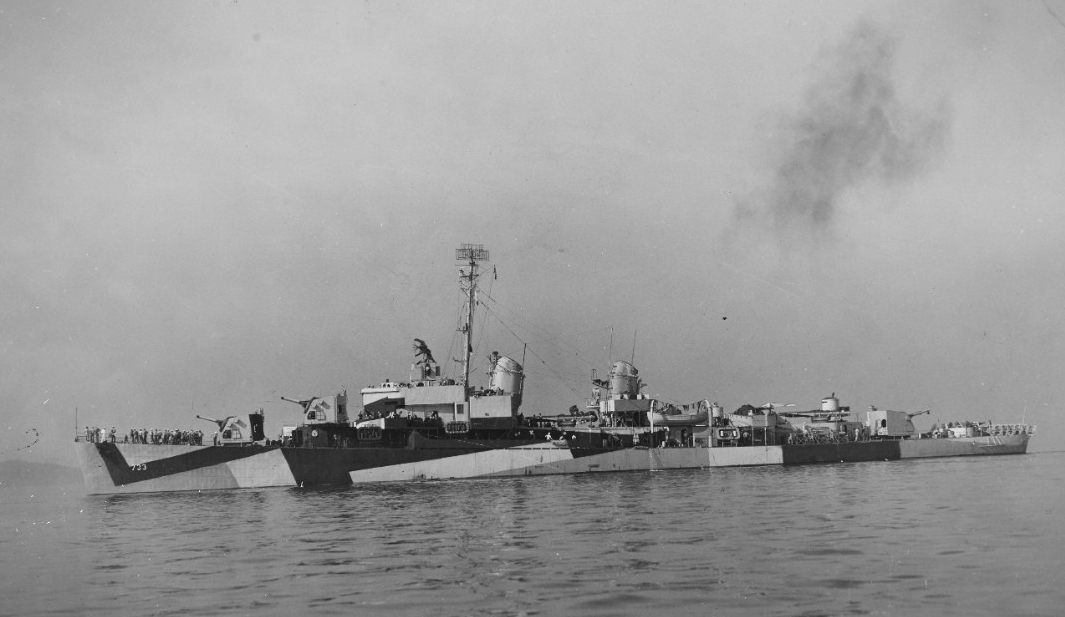
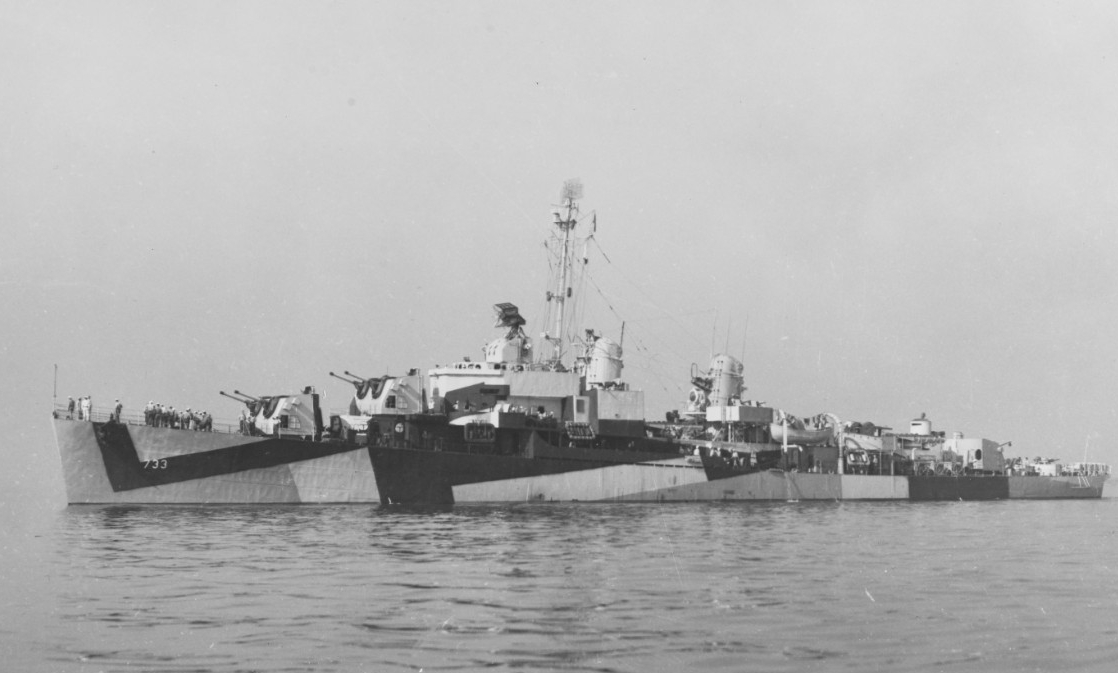
Getting underway to join the Pacific Fleet on 25 October 1944, Mannert L. Abele steamed for the Panama Canal. Upon transiting, she called at San Diego, Ca. before joining a convoy as an escort to Pearl Harbor until 3 December, when she joined Task Unit (TU) 12.5.1 for passage to Ulithi.
Detached from the task unit on 9 December 1944, Mannert L. Abele returned to Pearl Harbor for conversion to a fighter-director vessel. Upon the quick completion of that work and further training, she got underway for Eniwetok Atoll, Marshall Islands, for rehearsal exercises for the invasion of Iwo Jima.
Assigned to the transport screen of Vice Adm. Richmond Kelly Turner’s Task Force (TF) 51, Mannert L. Abele got underway for Iwo Jima on 19 February 1945, taking up station in a relatively quiet sector where only one enemy aircraft appeared during the entire first day’s operations. Conducting a sweep of the transport with Hyman (DD-732), Colhoun (DD-801), Frank E. Evans (DD-754), Thomas E. Fraser (DM-24), and Harry F. Bauer (DM-26) joined later in the day. Bradford (DD-545) relieved Mannert L. Abele at 1345.
On 20 February 1945, Mannert L. Abele relieved Hall (DD-583) in the fire support group and began active shore bombardment and close-fire support. She received credit for putting out several enemy emplacements; including machine guns, mortars, blockhouses, and caves, out of action. At 1140, she “opened up a large cave on Mt. Suribachi,” before destroying a pillbox near the beach at 1230. A Japanese machine gun on the beach opened fire on Mannert L. Abele, striking GM2c Robert J. Blain in the head and right shoulder with bullet fragments. The U.S. gunners returned fire, wiping out the enemy nest. Quickly patched up by the ship’s corpsman, GM2c Blain rested for a brief time before returning to duty. During the night, Mannert L. Abele’s gun crews delivered illumination and harassing fire for units of the Fifth Marine Division ashore. The next day, she resumed screening and radar picket duty.
While at Iwo, Mannert L. Abele’s brave crew noted the ship went in so close to cover the advance of the marines that several of them told Cmdr. Parker “to put wheels on her and we’ll take her right up on the beach.”
The Japanese doggedly attempted to prevent further American success. On the evening of 21 February 1945, an unidentified Japanese aircraft crashed 9,000 yards from the vessel. Following an oil and gasoline slick sighted at 1755, crewmembers soon found the pilots body at 1802 “in an upright position with only his helmet breaking the surface of the water. The parachute was open and tending to sink.” The crew noted the pilot did not wear the typical yellow inflation-type life jacket, common for U.S. pilots. A member of Mannert L. Abele’s repair party jumped over the side “without orders,” but was unsuccessful in bringing the body to the surface. Returning to Mannert L. Abele, the sailor described the pilot as “very small” with a broad face and “flat nose.”
Resuming her radar picket duties, Mannert L. Abele stood relieved by Bennion (DD-662) on 3 March 1945. Later that morning, at 1130, Mannert L. Abele rescued Ens. John D. Provost, AMM2c James D. Baillie, and ARM2c John S. Durham, the pilot and crew of a downed Grumman TBM-1C Avenger (BuNo 46045) from escort carrier Sargent Bay (CVE-83). Spotted by Mannert L. Abele’s lookouts, the three men had been on a raft in the water for some 45 minutes after ditching. All were in good shape except for ARM2c Durham, who had suffered a dislocated shoulder in the crash. Set by the ship’s medical officer, Durham was transferred to seaplane tender Hamlin (AV-15) while Ens. Provost and AMM2c Baillie were transferred to Helm (DD-388) for return to duty.
Resuming shore bombardment on 4 March 1945, Mannert L. Abele patrolled her screening station and took up a radar picket station. She commenced fueling at sea from Saugatuck (AO-75) at 0725. Completing refueling at 0812, Mannert L. Abele proceeded to an ammunition area to replenish her supply before sailing with TF 54, acting as a screen for battleship Nevada (BB-36). Four days later, Cmdr. Parker sailed back to the firing line to resume bombardment until released from duty on 10 March. Ordered back to Ulithi, the now-veteran destroyer arrived on the 12th to resupply, refuel, and await further orders.
Mannert L. Abele departed on 20 March 1945 for radar picket duty off Ulithi and the next day joined TF 54, Rear Adm. Morton L. Deyo’s “Fire Support Force,” for the invasion of Okinawa, Operation Iceberg. For the next three days, she maintained radar picket duties ahead of the main force. Upon reaching the Ryukyus on 24 March, she took up station in the anti-submarine screen, joining a fire support unit scheduled to bombard Tonaki Island, off Okinawa. She also screened heavy shore bombardment ships during pre-invasion operations from Kerama Retto to Ie Shima. In addition, she pounded enemy positions and supported underwater demolition team operations at proposed assault beaches on Okinawa.
On 27 March 1945, seven kamikazes attacked the task force before its Combat Air Patrol (CAP) could combat them. Mannert L. Abele took two of the suicide planes under fire, one a Japanese dive-bomber crashing into the main deck of Nevada, killing 11 and wounding 49 sailors. The second aircraft plunged 2,000 yards off the starboard beam of the battlewagon after bursting into flame from antiaircraft fire from Mannert L. Abele and Heywood L. Edwards (DD-663).
, Mannert L. Abele again came under suicide attack by three Japanese aircraft on 3 April 1945. She knocked down one with 20- and 40-millimeter gunfire just 200 yards abaft the ship. The second kamikaze screamed in at the bridge at only 75 feet. Hit repeatedly by 20- and 40-millimeter gunfire, the Japanese pilot continued to bore in, releasing a bomb when over gun mount one. Both bomb and plane traveled down the port side close aboard with the bomb landing only 100 feet off the port quarter. Skimming over the top of gun mount three, the enemy suicide plane crashed violently into the sea just past the stern. SoM3c Roland E. Nadeau took shrapnel to his left arm when the kamikaze hit the water and exploded.
Within minutes, another relentless Japanese aircraft came in from the starboard bow and dropped its bomb just missing the port beam. Under heavy fire from Mannert L. Abele’s gunners, the enemy pilot retired out of range. On 7 April 1945, her picket duties ended when the entire task force steamed into battle formation in anticipation of meeting the enemy, reportedly closing from the north. This was the futile suicide run of battleship Yamato, the largest battlewagon in the world, which had orders to beach herself at Okinawa to act as a gun platform against American troops and aircraft. Sunk by an overwhelming number of carrier task force fighters, dive and torpedo bombers, Yamato and her supporting vessels suffered greatly, unable to accomplish an impossible mission.
Upon destruction of Yamato and the retreat of what remained of her task force, Mannert L. Abele resumed bombardment and screening duties until 12 April 1945, when she suddenly found herself surrounded by hostile planes. At 1320, enemy aircraft appeared on radar closing from 60 miles away. Patrolling 75 miles off the northern coast of Okinawa, sailors on board Mannert L. Abele, despite noting the pleasant weather and excellent visibility, tensed knowing kamikazes could strike at any moment.
Five minutes later, Cmdr. Parker ordered General Quarters. At 1345, three Aichi D3A Type 99 carrier dive-bombers, spotted by bridge personnel, buzzed the destroyer before breaking off into two groups. Gun crews on board Mannert L. Abele opened fire on the group consisting of two Vals from a distance of 12,000 yards. The enemy dive-bombers quickly retired south. At 1348, the third Val, taking heavy 5-inch and 40-millimeter fire, was hit and set alight. Swerving off its course, the pilot attempted to crash into one of the two landing ship medium (rocket) vessels in the area, LSM(R)-189 and LSM(R)-190, but missed.
Four Kawasaki Ki-48 Type 99 Army twin-engine bombers, called Lily flew in 1,500 feet on a southerly course. One veered off and began closing Mannert L. Abele, crossing her bow. Taken under fire at 12,000-yards, the aircraft closed to within 9,000 yards before being hit and damaged. At 1440, three Mitsubishi A6M Zeros, or Zeke, streaked in before one peeled off. The other two continued their approach, coming in fast on a low glide.
Fired on by Mannert L. Abele’s fire hit one Zeke hit, sending it spiraling out of control before crashing into the sea. Five minutes later, the second aircraft pressed its attack, and under a terrific fire managed to crash abreast of the after fireroom on the starboard side, penetrating the after engine room where a “terrific shock and explosion” shook Mannert L. Abele, and killed nine out of 10 men in the after fireroom. EM2c Henry S. Paulman rescued a badly burned and unconscious shipmate, WT1c Anton J. Kirsch, from the after fireroom.
EM3c Charles A. Suddreth and MM2c Deno Pisaneschi, stationed in the after emergency diesel room, just aft of the engine room where the kamikaze struck, later agreed there were two rapid explosions as part of the first hit. The second blast blew the hatch off the diesel room and knocked Pisaneschi through the hatchway into the after living compartment. At the same time the emergency lights came on, providing Suddreth enough illumination to spot a crack into the after engine room. Suddreth made his escape forward along the dimly lit passageway, but escaping steam from a pipe knocked loose by the explosion scalded him seconds later. Managing to abandon ship, EM3c Suddreth suffered first and second degree burns to his face and back, but survived after being taken on board attack transport Gosper (APA-170) for treatment.
Only a minute after the suicide struck, at 1446, another enemy plane skimming the water at a terrific speed buzzed just off the starboard beam. The odd-looking craft, described as a “small mid wing job with no projections, large fuselage, stubby wings and painted light blue-grey or aluminum,” hit Mannert L. Abele at the waterline, abreast of the number one fireroom, causing a second horrific explosion. The radar picket ship’s bow and stern sections buckled rapidly. Immediately realizing his vessel was in trouble, Cmdr. Parker sent Lt. Cmdr. Harry W. Burns, Jr., his executive officer, below to direct repair parties. Cmdr. Burns realized he had to direct the crew to leave the ship instead. “By the time I reached the main deck, starboard side, the ship was listing to port and sinking rapidly,” Burns remembered. “I found the First Lieutenant, and he and I ordered everyone we could see to abandon ship, and then jumped overboard ourselves.”
Blown overboard by the impact of the second explosion, Lt. Linel Way managed to grab a line dangling from a forward boat davit and hauled himself back onto the ship. As he made his way forward on the port side’s main deck, he saw a wheel on a hatch turning; realizing somebody on the other side was trying to escape. Upon investigating, Lt. Way discovered a lower dog on the hatch prevented it from opening. With the assistance of Petty Officer Paulman, they exerted enough force on the lower dog to spring the hatch open. Ten men from the forward engine room staggered out, including Lt. James J. Hobitzell III, Mannert L. Abele’s engineering officer.
Almost immediately after the kamikaze strike, Mannert L. Abele broke in two, her midship section obliterated, bow and fantail rising and rolling to port. With all after engineering spaces wiped out by the first strike, her keel abaft number two stack destroyed, and taking on water quickly, the commanding officer realized he had to give the order to abandon ship. Cmdr. Parker and bridge personnel jumped into the sea when only moments later, rising seawater reached the after bridge deck gratings.
At 1449, Mannert L. Abele’s sailors abandoned ship and began furiously swimming away from the rapidly sinking destroyer. Passing Japanese aircraft strafed surviving crewmembers in the water, many already wounded. One vengeful pilot dropped a bomb among a large group of Americans from the main deck. Several sailors died from the resulting explosion.
By 1600, LSM(R)-189 and LSM(R)-190, “worth their weight in gold as support vessels,” according to Cmdr. Parker, splashed two additional enemy aircraft, fought off further air attacks, and began recovering Mannert L. Abele survivors while a group of four Vought F4U Corsairs appeared overhead to provide support. Two Mannert L. Abele survivors singled out for bravery were Lt. (j.g.) John E. Hertner, credited with caring for the wounded, and SF3c Arthur G. Ehrman, Jr. After rescue from the sea by one of the nearby vessels, SF3c Ehrman dived back into the water to rescue two men having difficulty getting aboard. Despite the heroic efforts of several others, 84 Mannert L. Abele sailors were lost during the kamikaze attacks and sinking.
The strange-looking craft fatally striking Mannert L. Abele was in actuality a deadly flying rocket bomb, one of the first “cruise missiles,” and the latest in the Japanese arsenal designed to cause fear and inflict maximum carnage to the Allied navies. With a wingspan of 16 feet, the Yokosuka MXY-7 Ohka (Cherry Blossom) were small (approximately 19 feet in length), incredibly fast rocket-powered human-guided kamikazes, reaching speeds of up to 425 miles per hour (mph) in level flight, and over 600 mph in a dive.
Typically carried and launched from underneath Mitsubishi G4M2 Type I land attack planes (Betty), Ohka pilots would detach from the bomber and begin a low-glide towards a target before the pilot switched on its three solid-fuel rockets. Carrying a 2,645-lb. warhead, the goal of Ohka pilots was simply to smash into, destroy, and sink allied vessels. Proving difficult for Allied gunners to shoot down due to the rockets high rate of speed, Ohkas received the nickname baka by U.S. sailors, translated as “fool.”
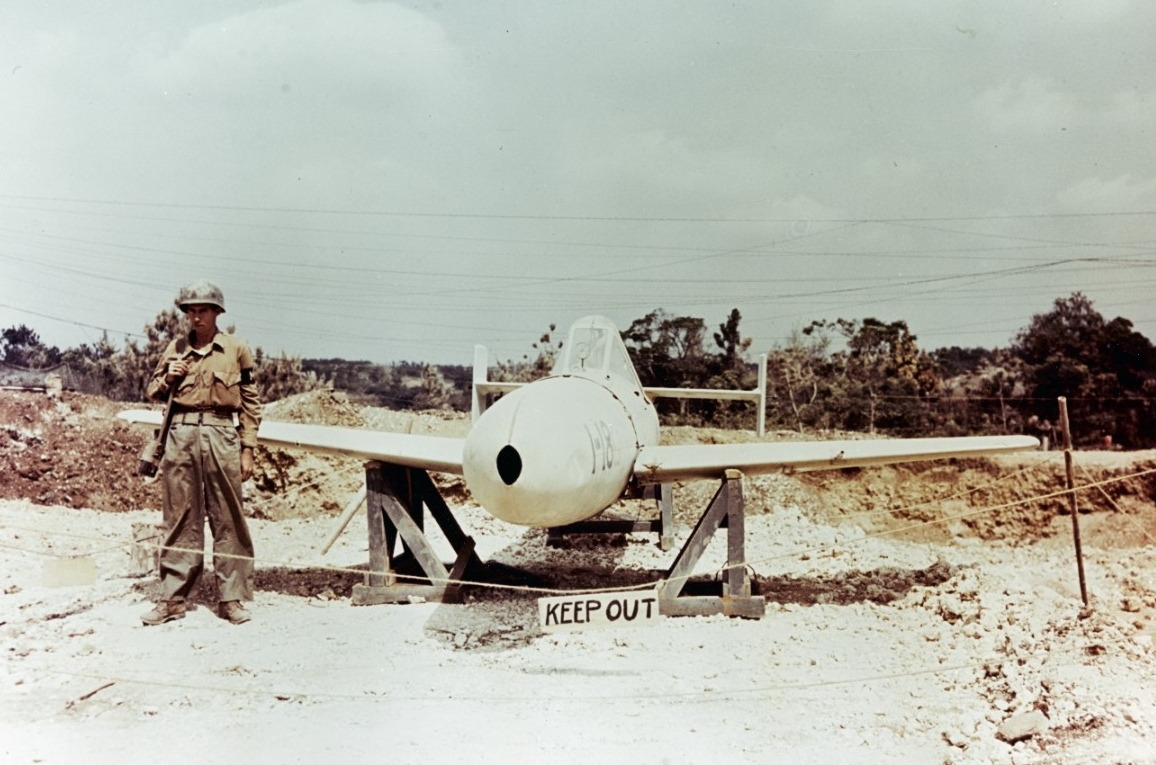
Mannert L. Abele, the first of three radar picket ships hit by an Ohka aircraft during the Okinawa campaign, also had the unfortunate distinction of being the first vessel sunk by the terror weapon. Although Ohka damaged seven American vessels at Okinawa, some sources claim only four or five received damage by the suicide rockets. Destroyers Jeffers (DD-621) and Stanly (DD-478) both received damage by Okhas on the same day Mannert L. Abele sank. Despite the enemy's desperate efforts, the defensive antiaircraft tactics employed by the destroyer squadrons and other task force vessels successfully kept the rocket-powered kamikazes from damaging any of the U.S. Fleet’s capital ships, ensuring the success of the campaign. Capt. Frederick C. Moosbrugger, overall commander of the radar picket destroyers, praised the actions of Mannert L. Abele and her sister ships by heralding their hazardous duties as "a symbol of supreme achievement in our naval traditions."
Mannert L. Abele received two battle stars for her World War II service.
| Commanding Officers | Dates of Command |
| Cmdr. Alton E. Parker | 4 July 1944–12 April 1945 |
Guy J. Nasuti
06 February 2019


